Menus
- World champion bike from Tom Sykes
- Kawasaki ZX-10R as stable as a freight train
- The feeling for the front wheel is crystal clear
- Turns over 15,200 rpm
- Challenges the pilot with sheer force
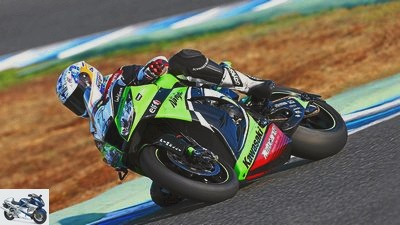
Kawasaki
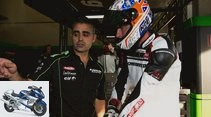
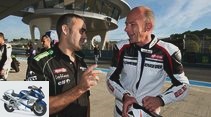

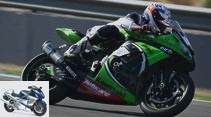
20th photos
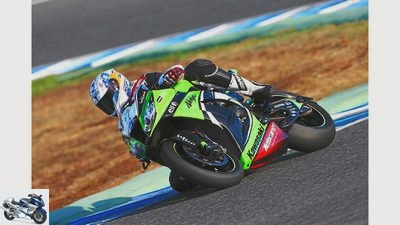
Kawasaki
1/20

Kawasaki
2/20
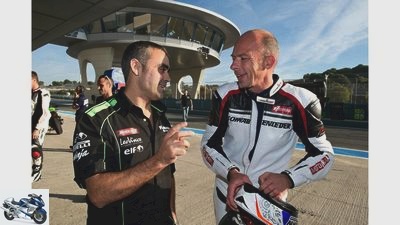
Kawasaki
3/20
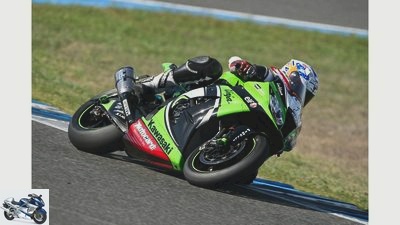
Kawasaki
4/20
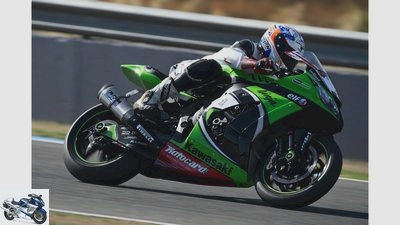
Kawasaki
5/20

Kawasaki
6/20
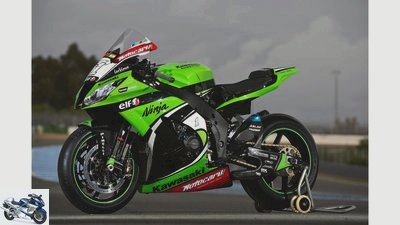
Kawasaki
7/20
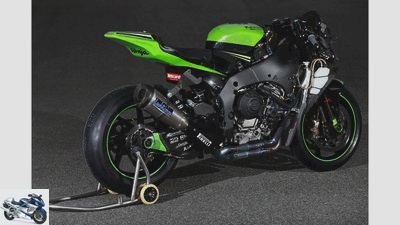
Kawasaki
8/20
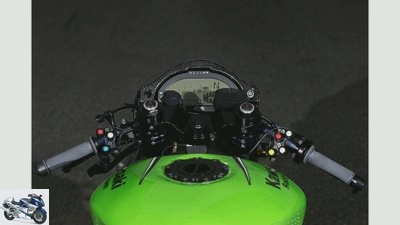
Kawasaki
9/20
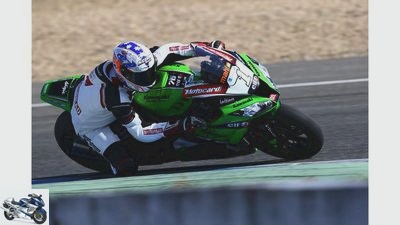
Fig
10/20
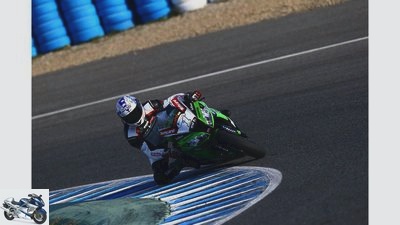
Fig
11/20

Kawasaki
12/20
Actually, the tachometer and shift light are well in view. The occasional superbiker just doesn’t have much time to pay attention to the brutal power delivery.
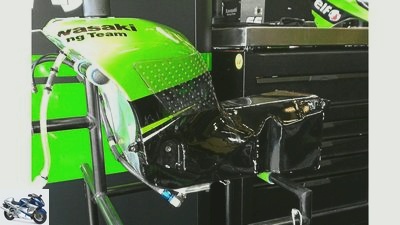
Fig
13/20
For an optimal center of gravity, the 21.97 liter tank is pulled far under the seat. It weighs just 4.28 kilograms when empty.

Fig
14/20
The area around the steering head is reinforced with additional welded plates to provide more braking stability.
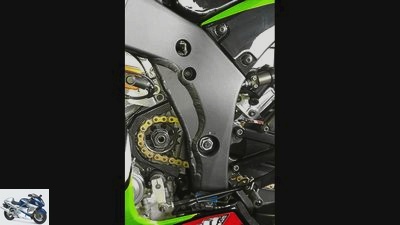
Fig
15/20
The left frame profile also has additional stiffening in the area of the gearbox output and swing arm mounting.
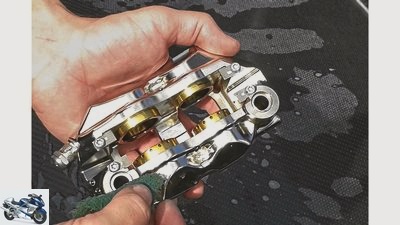
Fig
16/20
The brake calipers are meticulously cleaned by hand every day so that they can still bite powerfully tomorrow.
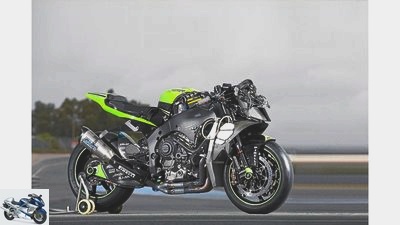
Kawasaki
17/20
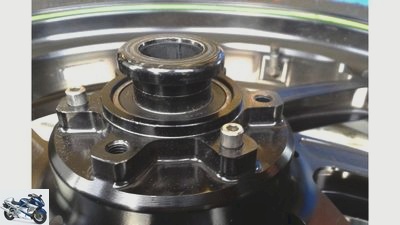
Fig
18/20
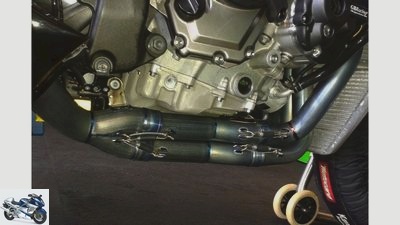
Fig
19/20
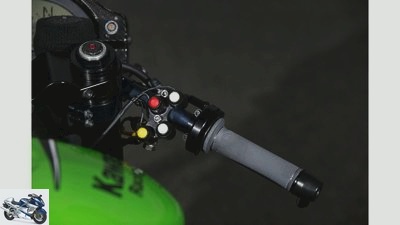
Kawasaki
20/20
Superbike-Kawasaki ZX-10R in the driving report
World champion bike from Tom Sykes
Exactly 20 years after Scott Russell won the only Superbike World Championship for Kawasaki to date, Tom Sykes has again given the Greens the triumph. MOTORRAD rode the winning Kawasaki ZX-10R.
Triumph followed the drama. Tom Sykes was missing half a point in 2012 with his Kawasaki ZX-10R to the world title. He lost it in a spectacular final to Max Biaggi and Aprilia. This year, however, the Greens turned the tables. The two finals in Jerez were a triumphal procession for Tom Sykes.
Buy complete article
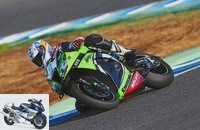
Superbike-Kawasaki ZX-10R in the driving report
World champion bike from Tom Sykes
Introduction of ride-by-wire
In 2011 there was just one race win (Nurburgring) and 13th place finish. The team around Sykes was therefore restructured for 2012. Crew Chief Marcel Duinker and Danilo Casonato, responsible for the engine and chassis, brought MotoGP experience with them – and got the Kawasaki Express going.
The introduction of ride-by-wire and the improvement of feel and traction at the front brought decisive progress. This was also worked on in 2013. Tom Sykes must be a beast on the brakes. This also quickly becomes clear during the short test laps – not only because the steering head is reinforced with welded aluminum plates and the upper triple clamp, which is cranked upwards, should help the fork to become more rigid.
Kawasaki ZX-10R as stable as a freight train
At the end of the downhill back straight, you have to brake at a tight bend to the right and slow down from almost 280 km / h to the long first gear. The filigree Brembo racing pliers grab hold of it, and can be dosed with two fingers. The tightly tuned and yet very sensitive Showa fork vehemently resists diving too deep. The ZX-10R remains stable like a freight train on course. No wagging, no twitching, even though around 56 percent of the weight is statically on the front wheel. Incidentally, Tom Sykes drives with a flap in the exhaust, which is only effective when braking and is otherwise fully open. Because it needs even more engine brakes than the four-cylinder, which is equipped with a lighter crankshaft, already offers.
The green arrow points precisely towards the turn-in point, the brake pressure can be dosed precisely. Downshifting takes place without having to use the clutch – now standard in the World Cup. The engine electronics ensure that the gears sit firmly on the gearshift lever with targeted throttles. The right hand only needs to brake. Small double-gas bursts from the wrist, which minimally impair the pull on the brake lever and could cause movement in the fork when braking, are thus superfluous. Every detail counts.
The feeling for the front wheel is crystal clear
The feeling for the front wheel when turning is crystal clear. The fact that the tens folds playfully in an inclined position is known from the series machine. How easy it can be brought down to the deepest slopes, however, not. It cuts its path so precisely that not an inch is wasted. To speak of the exertion of force when changing lean angles would mean doing the Kawa in the wrong.
Nevertheless: This tens is a long way from the production bike, which is easy to handle under all conditions. She is a predator who doesn’t like half-hearted things. That becomes clear at the latest at the apex of a curve. It calls for a sharp superbike riding style.
Anchoring far and hard into the bends, bending briefly and decisively, straightening up quickly and then accelerating as hard as you can – the chassis and electronics are coordinated with this. Indecisive messing around with the throttle the four-cylinder acknowledges gruffly. He wants a clear message. And that means with Tom Sykes: Throttle valves from the crown on draft. A smooth driving style, leaning for a long time and then cocking the tap on the edge of the tire and leaving the rest of the traction control to do not really help the pilot. The shock absorber, which is surprisingly soft compared to the fork, allows a surprising amount of movement in the hindquarters. It feels like the traction control intervenes too early, as it is tuned for maximum traction when the bike is slightly upright, when the tire offers a larger contact surface and can transmit more power. Sykes, for example, keeps the gas constant on the first slide until the tire has grip again and only then continues to pull the gas until the next slide. If the pilot changes his driving style accordingly, the mail goes off.
At the apex of the curve, the Kawa roars more like a twin or a Yamaha R1 with a crossplane engine when the throttle valve is opened, although it is a screamer with a conventional firing order. The solution to the riddle lies in the control of the four throttle valves. The left and right pair of flaps each sit on their own shaft, which are connected to each other in the series bike. In the factory racer, this connection has been removed so that both pairs can be controlled separately via ride-by-wire for the smoothest and most direct performance possible at the exit of the curve. If the lean angle and grip allow full throttle, all four flaps work synchronously again, the Kawa changes its tone and the pilot reaps full thrust.
Turns over 15,200 rpm
And the ZX-10R has a lot of thrust that leaves you spit away. From 8000 rpm the air burns, the four-cylinder rotates so quickly that there is hardly any time to breathe. Not at all to look at the rev counter. The Kawa is said to have produced 236 hp at the transmission output as early as 2012. The technicians found another 4 hp for 2013. Lighter rocker arms and valve springs allow 500 rpm more. The Kawa turns over 15,200 rpm. The technicians and the tachometer are silent about how far.
Challenges the pilot with sheer force
An additional sheet metal stiffens the frame on the left of the swing arm mounting so that it twists as little as possible under the brutal pull on the chain. Tom Sykes controls acceleration and rising front wheel with a thumb brake for the rear wheel. The wheelie control only intervenes late and as a lifeline. The puzzled tester therefore suddenly hits the tank in front of his nose when accelerating fully, and when fighting the wildly rising front wheel he closes the gas or shifts into the next gear in dire need. Squeezing this beast to the limit is not often possible in the tight rounds. And although it hits corners with precision like a laser, pampers with crystal-clear feedback and is almost as handy as a 600, it challenges the pilot with its sheer violence and uncompromising nature. Accelerated too impetuously over the hilltop into the back straight, the nervously twitching handlebars shows that the Kawa wants to be handled with care. The world champion bike is a brutally strong iron, tailor-made for your rider, no big hit for everyone.
“And our wealth of experience and data is now a lot bigger than it was before this season,” says Crew Chief Duinker. And it makes it clear where the journey should go next year: back to the top.
Related articles
-
New Kawasaki Ninja ZX-10R (2016) in the driving report
Kawasaki 18 pictures Kawasaki 1/18 Kawasaki Ninja ZX-10R. Kawasaki 2/18 Kawasaki Ninja ZX-10R. Kawasaki 3/18 Kawasaki Ninja ZX-10R. Kawasaki 4/18 Kawasaki …
-
Kawasaki Versys 1000 driving report
Wright driving report: Kawasaki Versys 1000 (with video) Kawasaki’s all-rounder now with a large four-cylinder No half measures: For the Versys there is now the …
-
Driving report KTM 1290 Super Duke R
Photo: KTM 23 photos KTM 1/23 There is no competition! Pithy words, but you have to agree with KTM press man Thomas Kuttruf. KTM 2/23 The seat and rear…
-
Driving report Triumph Tiger 800 XCx and XRx
Triumph 31 pictures Triumph 1/31 Triumph 2/31 Triumph 3/31 Triumph 4/31 Triumph 5/31 Triumph 6/31 Triumph 7/31 Triumph 8/31 Triumph 9/31 Triumph 10/31 …
-
BMW S 1000 R in the driving report
36 pictures 1/36 2/36 3/36 4/36 5/36 The headlights on this BMW also shine asymmetrically. 6/36 The standard steering damper is not …
-
Driving report Ducati 1098 R No compromises Your sole purpose is to achieve race victories. This is what the 1 098 R was built for. And for that she got so …
-
First driving report of the Kawasaki GPZ 900 R (MOTORRAD 1-1984)
Archive 26 pictures Archive 1/26 Light, strong and fast was the formula for the Kawasaki superbike of the 1980s, the GP Z 900 R. Archive 2/26 According to …
-
Ducati 899 Panigale in the driving report
Cervetti 17 pictures Ducati 1/17 Even with the front wheel still braked and at high speed, the Ducati 899 Panigale hits the path precisely into the Tamburello ….
-
Ducati Streetfighter 848 driving report
Ducati 8 pictures Ducati 1/8 For the Ducati Streetfighter 848 the Testastretta 848 engine from the Superbike was also equipped with the so-called …
-
Kawasaki Z 1000 SX in the driving report
Photo: Kawasaki 11 photos Kawasaki 1/11 Part of the new front fairing are the LED headlights. They should shine brighter and wider at the same time …